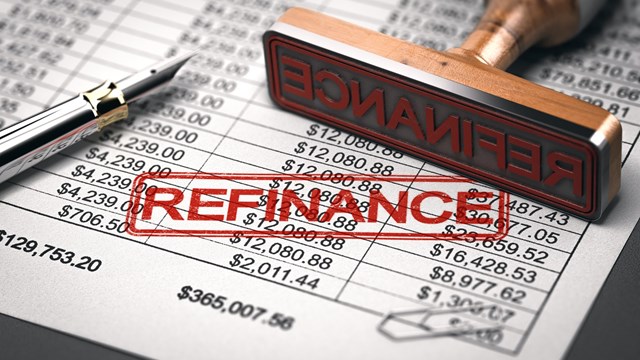As noted elsewhere in this edition of CooperatorNews, all types of properties, including co-op, condo, and HOA communities, are experiencing steep increases in their insurance premiums while coverage is being reduced. Some are seeing their policies dropped altogether. It’s an alarming situation leaving boards scrambling to find a way to protect their communities from liability while not breaking the bank.
What’s Going on Here?
Insurance theory is based on assessment of risk, and the management of that assessed risk. It’s a necessity often required by law for property owners—particularly for shared interest communities, as the loss that could result from a natural or man-made disaster could easily devastate the financial health of a community. Insurance and the costs associated with it are a long-standing line item in any and every annual budget. The question is, why are insurance costs increasing so quickly and so steeply?
“There are two main reasons carriers are choosing to decline to renew or otherwise severely alter existing policies,” says Douglas Weinstein, senior vice president for operations for AKAM, a property management firm with offices in New York City and southeast Florida. Those reasons are “failure to maintain the property and excessive loss history. For the first example, say your roof is old. It has to be replaced, but the association says, no, we don’t have the money. Insurance carriers can cancel your coverage for failure to maintain that roof. An example of the second reason is where you may have an excessive loss history. Losses fall into two categories: loss by a storm or weather event, and loss to a different type of event, like a pipe leak or a fire.” Too many of these events in succession, says Weinstein, and “The carrier will say it’s not feasible to insure the building anymore. Or they might elect to offer a very high deductible.”
Janet Aaronson, a partner at the law firm of Marcus, Emmer, Errico & Brooks, located in Braintree, Massachusetts, concurs: “It could be the claims history or the condition of the building that results in a cancellation. It could be anything from circuit breakers to construction that just isn’t satisfactory in their eyes. It might even be something as simple as the proximity of your building to your neighbor. If you’re too close, that can be construed as a threat to your property; the insurer might consider it as increasing fire risk. These factors are now a bigger issue than doing a risk assessment and might bounce you out. Insurers’ senses are a little heightened these days.”
“This is a difficult market,” says William McCracken, a partner with Moritt Hock & Hamroff, located in Manhattan. “Everyone is having trouble getting sufficient insurance. Everyone is walking a fine line.”
Insurers are particularly sensitive to loss runs at a given property. A loss run is essentially just a report detailing how many losses or claims a property has had over a given period of time. The more losses and claims, the more uncomfortable an insurance carrier will become, and hence, the higher probability you may lose your coverage.
“A loss run is a document that outlines claims put in by an insured, in the case of condominiums, the association, or a corporation in the case of a co-op,” explains Weinstein. “That could be any claim, from a leak to a ‘trip-and-fall,’ to a natural disaster. That’s what a potential carrier looks at when underwriting a new association. It’s also what your existing carrier is looking at to determine if they want to continue with your coverage, and at what premium.”
“Under the best of circumstances, insurance companies are still for-profit businesses,” says McCracken. “They don’t make any money on co-op and condo buildings as it is, so they look at a loss run and see they’re taking in, say, $50,000 in premiums but paying out $1 million. They won’t keep you. If you have a substantial loss, whether your fault or not, you are at risk of being dropped. You can’t control that.
“The other part is that carriers are on high alert if they get a sense that a building isn’t managed well,” he continues. “Or if management hasn’t checked contractor insurances for Local Law 97, for instance. If the contractor isn’t insured [and there’s a claim related to that contractor’s work], the loss goes to the building. Even if there hasn’t been a loss, if the insurance company sees that an uninsured contractor has been hired, they can and will drop you.”
Protecting Yourself
While there may be little we can do about the increases in insurance costs in general, the good news is that there are ways to avert losing coverage. That approach starts with—and pretty much depends on—staying ahead of the two factors cited above by being vigilant about maintaining our properties and tracking our potential loss points.
“First of all,” says Weinstein, “work with your managing agent to maintain your building inside and out. Stay up to date with all state, county, and city recertifications. Be certain that you are up to date with your milestone reports. If your milestone report indicates corrective work or maintenance is necessary, have a plan to get it done. As far as other types of losses, make sure you are up to code with items such as fire alarms and retardant systems. Carriers also look at all code required certifications, and will usually require an inspection. Make sure your building is always in top condition, that you’re adhering to current codes, and that current detection systems are maintained. Alarms don’t do any good if they don’t work or are outdated.”
McCracken agrees. “Risk can be reduced, both for your building and your insurance carrier by managing your building well,” he says. “It’s critical to have a top-notch super to manage your maintenance program well. You can reduce your risk that way. Buildings that are poorly maintained are more likely to suffer a casualty than those that are well maintained. You may pay more to a manager, super, or staff to help reduce risk, but it’s worth it. Another important factor to keep in mind is to make sure any and all vendors who work at your building have proper insurance coverage in place. Ask your building’s attorney to review everything and make sure your carrier has approved the contractor and their insurance, and made any necessary line item changes. In order for your carrier to get comfortable, they have to be sure they aren’t at greater risk. If you haven’t seen that happen regarding a big project, as a board you should be on high alert.”
The Ramifications of Rejection
If your insurer increases your premiums and deductibles so sharply that it becomes unaffordable, or if they reject you or drop your policy altogether, how does that affect your ability to find coverage elsewhere? The answer is not encouraging, say the pros.
“Being rejected by your current insurer makes it harder to find a new one,” says Aaronson. “There is an adverse risk, and now you fall into this abyss of who will insure you? Condominium governing documents require a certain insurance rating for your insurance carrier, and there may also be legal issues. In Massachusetts, if something happens to your building and the insurance company is not rated by the state, you may have a problem [recouping damages]. As in Florida, in Massachusetts we have a ‘Fair Plan’ available for properties in this situation. It’s the insurance of last resort—but it covers individual units, not associations.
“We’ve also seen associations go to more expensive, less good coverage when they are out of the standard market, like Lloyds,” she continues. “If you don’t have the appropriate coverage, it can make it difficult to sell your unit and to finance through FNMA and FDMC. It’s a very bad situation to be in, and takes at least three years to get off the ‘list.’”
McCracken cautions that “if you go out on the market for insurance, it’s difficult to get the same coverage you had at the same price you got in the past. The big problem is if you had a policy for a long time, you likely had legacy pricing, which usually provides a better deal. But if that goes away, you start from zero with a new carrier, and coverage will be more expensive. You’re better off if you can avoid going out to the market. What you are offered by your old carrier is probably better than what a new carrier would offer.”
Recommendations
If your policy has been cancelled outright, the pros have a few pieces of advice on next moves.
“Start as early as possible to find new coverage,” advises Weinstein. “Begin by speaking with brokers and looking for alternatives. Some carriers have come back to troubled markets—including Florida and New York—but it’s still a problem. They want the best properties, with no loss histories. It’s kind of like auto insurance; one accident, and you’ll pay a higher premium.”
If you are concerned that you may lose your coverage, Aaronson says, “We have seen this coming—so don’t wait until you’re faced with it. Address it now. Maybe things will improve, but I recommend being proactive while you’re still covered. Make changes now so you’re not in jeopardy of losing your coverage.”
A J Sidransky is a staff writer/reporter for CooperatorNews, and a published novelist. He may be reached at alan@yrinc.com.










Leave a Comment